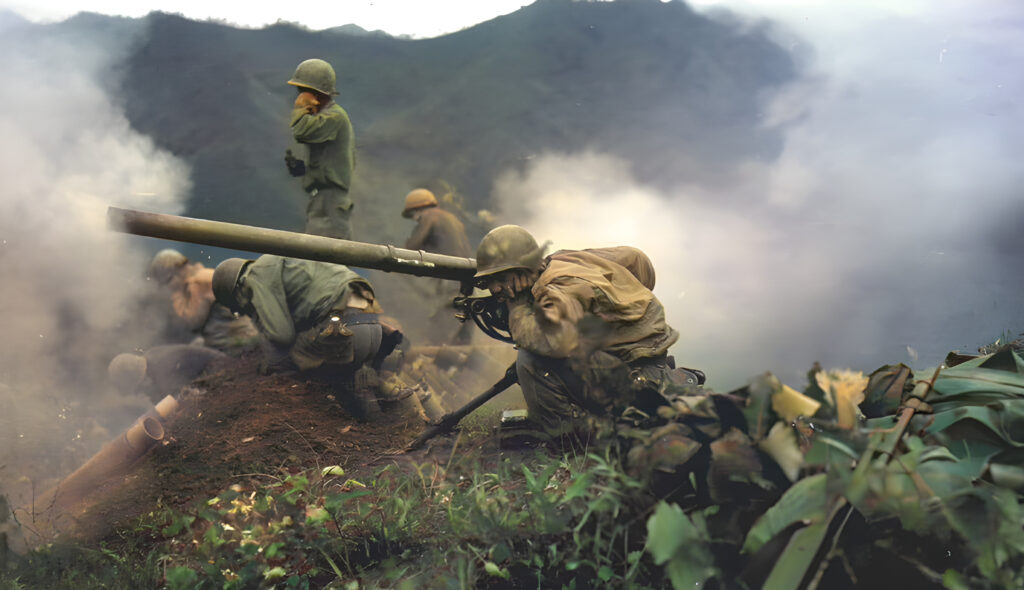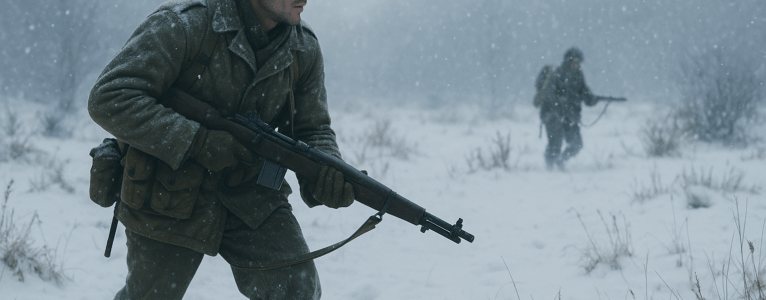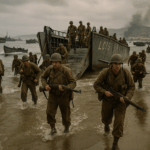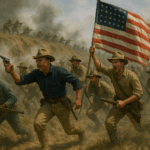Please take a minute to check out the book I’ve written about the Korean War.
Introduction
The Yalu River Campaign was a critical and transformative episode of the Korean War. As United Nations (UN) forces, led by U.S. General Douglas MacArthur, pushed north in hopes of a unified Korea, they faced a formidable response from Chinese forces crossing the Yalu River. This Chinese intervention changed the war’s dynamics, ushering in a period of intense conflict, strategic reversals, and eventually leading to the war’s protracted stalemate. Through this exploration of the campaign’s background, key battles, and tactical operations, we can better understand how China’s military intervention reshaped the Korean War and influenced the global Cold War landscape.
Origins of the Yalu River Campaign
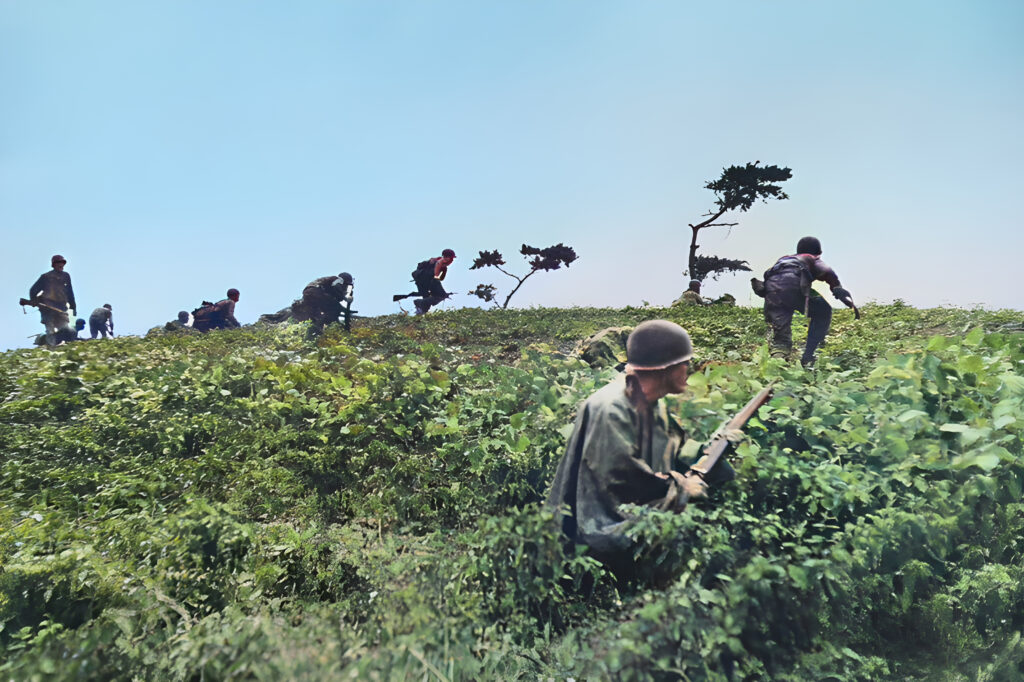
The origins of the Yalu River Campaign trace back to the outbreak of the Korean War in June 1950 when the Korean People’s Army (KPA) launched a surprise invasion of South Korea. The North’s objective was rapid: unify Korea under communist rule. However, as UN forces intervened, including a significant contingent from the U.S., they quickly countered the North’s advance. The successful Inchon landings in September 1950 by the U.S. X Corps marked a turning point, allowing UN forces to recapture Seoul and press the KPA northward.
Encouraged by these victories, General MacArthur advocated for an ambitious goal: crossing the 38th Parallel, the dividing line between North and South Korea, to eliminate the KPA threat entirely. MacArthur’s plan faced mixed reactions. Some UN leaders, especially from Britain, argued for caution, fearing that a northward push could provoke Chinese or Soviet intervention. Despite these warnings, MacArthur believed the UN forces’ rapid advance would dissuade China from entering the war, and with U.S. approval, he proceeded north.
Strategic Goals and Risks
MacArthur’s plan to advance to the Yalu River was rooted in both military and political strategy. A unified Korea, under UN influence, would showcase the West’s resolve to counter communist expansion. However, the strategy held considerable risks. Advancing north brought UN forces perilously close to China, where Beijing watched the situation with mounting concern. Intelligence reports from China indicated that crossing the 38th Parallel could be seen as a direct threat to Chinese sovereignty, but these warnings were not taken seriously by MacArthur, who believed China lacked the resources to engage UN forces.
This miscalculation led to a series of high-stakes decisions that would have lasting consequences. By pushing UN forces to the Yalu River, MacArthur underestimated the willingness of the Chinese government, particularly Mao Zedong, to intervene and defend its borders. The assumption was that Chinese forces were preoccupied with post-revolutionary reconstruction and dealing with issues in Taiwan. This perspective led to one of the most consequential oversights in the Korean War, as China’s response would soon shift the war into a new phase of intense and costly engagements.
China’s Motivation to Enter the War
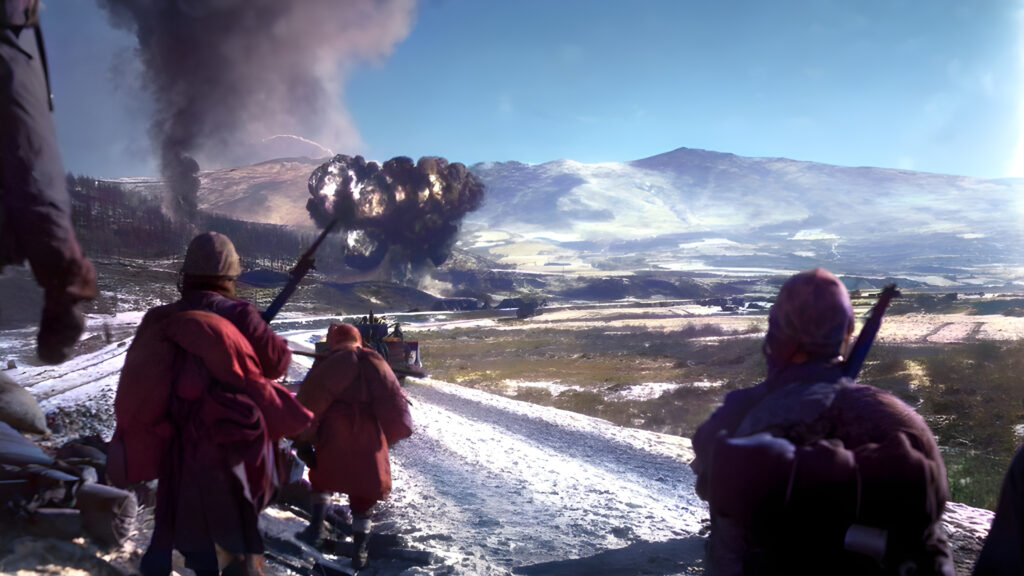
China’s intervention was driven by a mix of national security concerns, ideological considerations, and regional stability. The Chinese leadership saw a significant military presence under UN command advancing toward its border as a threat. With Taiwan remaining under Chiang Kai-shek’s control and supported by the U.S., and Japan acting as a crucial ally to the West, Mao Zedong feared an encirclement strategy aimed at containing communist influence in Asia. The presence of Western forces on China’s doorstep, across the Yalu River, threatened to create a permanent, pro-Western regime in Korea.
China issued a series of diplomatic warnings indicating that it would act if UN forces crossed the 38th Parallel. These were not empty threats but part of a calculated effort to protect Chinese sovereignty and influence. However, UN officials, including MacArthur, largely dismissed China’s warnings. Mao saw intervention as necessary not only to secure China’s borders but also to uphold China’s role as a leader in the communist movement and to counteract what he saw as imperialist aggression. China’s leadership mobilized the People’s Volunteer Army (PVA) under the command of Marshal Peng Dehuai, signaling its determination to influence the outcome of the Korean War.
The First Chinese Offensive: A Show of Force
China’s entry into the Korean War began with a sudden and powerful offensive in October 1950, known as the First Phase Offensive. Nearly 300,000 Chinese troops crossed the Yalu River in a covert operation, infiltrating UN lines. The offensive was carefully planned to deliver a calculated message to the UN forces while testing their combat capabilities. Chinese forces, trained in guerrilla warfare and accustomed to operating in harsh, mountainous terrain, launched nighttime attacks against the unprepared UN forces, catching them by surprise.
The offensive was especially effective due to China’s use of stealth and overwhelming manpower. The Chinese PVA encircled several UN divisions, including elements of the U.S. 1st Marine Division. These surprise attacks leveraged the advantage of close-range combat, minimizing the impact of UN artillery and air support. Although the Chinese withdrew after initial engagements, their offensive demonstrated a formidable commitment to defending North Korea and served as a stark warning of the potential for further, more extensive intervention.
The Chinese Second Phase Offensive
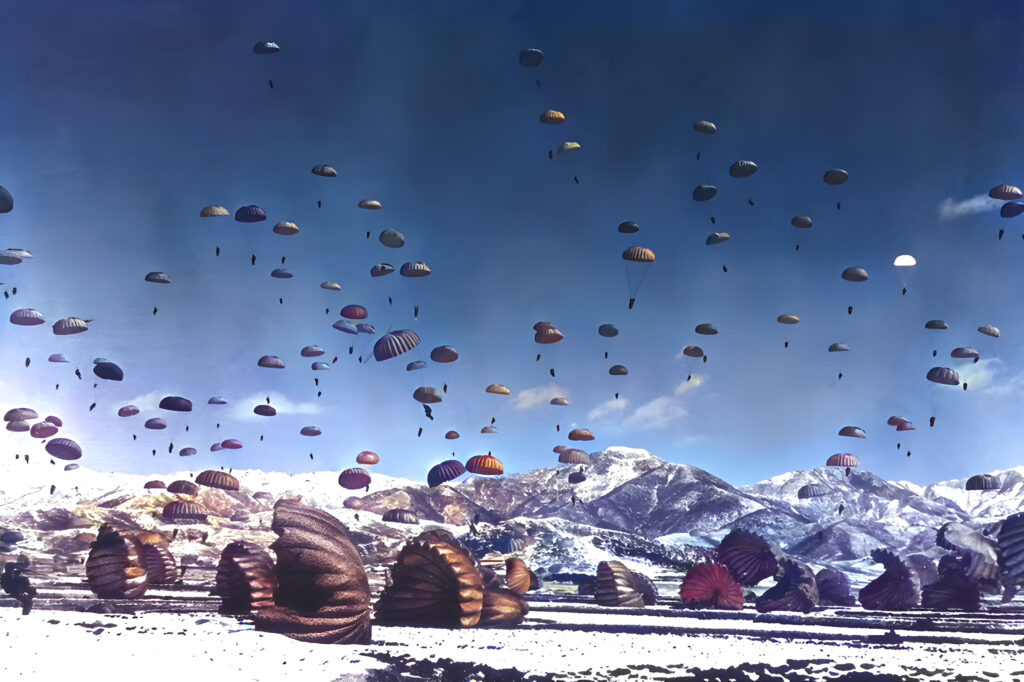
Following the success of the First Phase Offensive, China prepared for a larger, coordinated assault. Known as the Second Phase Offensive, this operation began in late November 1950 and included coordinated attacks across multiple fronts. The Chinese PVA launched a massive assault on both the Eighth U.S. Army in the west and the U.S. X Corps in the east, overwhelming UN forces and forcing a large-scale retreat.
This offensive marked the beginning of a strategic withdrawal for UN forces, shifting the momentum of the war in China’s favor. Notable operations during this phase included the actions of the U.S. 187th Airborne Regimental Combat Team (RCT), which conducted a parachute drop behind enemy lines in an attempt to disrupt Chinese operations. However, the Chinese PVA’s superior numbers and surprise tactics proved difficult to counter. The Second Phase Offensive demonstrated China’s commitment to pushing the UN forces back, fundamentally altering the war’s trajectory.
The Role of Geography in the Campaign
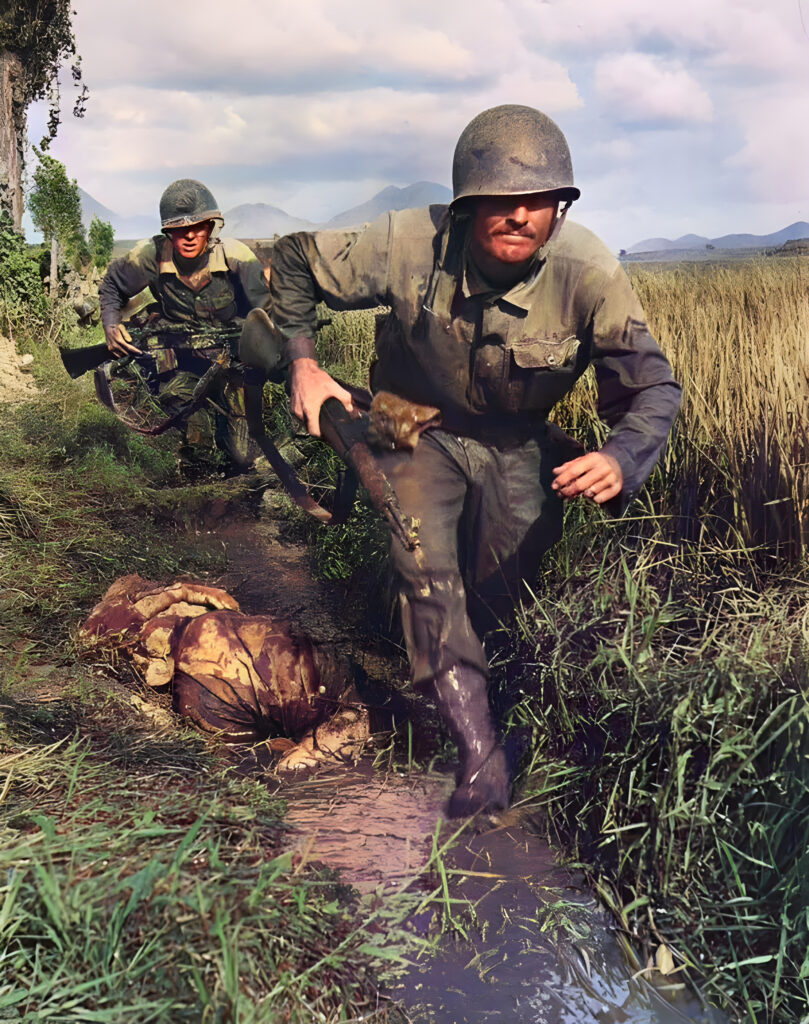
The Korean Peninsula’s geography, particularly the mountainous terrain of North Korea, provided a natural advantage to Chinese forces. The steep hills, narrow valleys, and dense forests allowed Chinese troops to employ guerrilla tactics, making it difficult for UN forces to maintain their supply lines and communicate effectively. The Yalu River’s proximity to the mountainous border provided additional cover, as Chinese forces could use familiar terrain to conceal movements and establish strong defensive positions.
This geographic advantage forced UN forces to adapt, but supply line vulnerabilities and the logistical challenges posed by the mountainous terrain created persistent obstacles. The U.S. Army Rangers, known for their specialized training, conducted several reconnaissance and raid operations to gather intelligence and disrupt Chinese supply routes. Despite these efforts, the rugged landscape continued to favor Chinese tactics, with UN forces struggling to gain ground in the face of the well-entrenched Chinese positions.
UN Command Structure and Challenges
Command challenges within the UN forces further complicated the situation. General MacArthur, stationed in Tokyo, directed operations remotely, relying on delayed and often incomplete information. Communication and coordination between UN units were hindered by the complex multinational composition of the UN forces, which included troops from South Korea, the U.S., Britain, and several Commonwealth nations. These logistical and communication issues limited the UN’s ability to mount a cohesive response to the Chinese offensive.
Political tensions between MacArthur and President Truman also played a significant role. Truman advocated for a more limited conflict to avoid escalating the war, while MacArthur pushed for a more aggressive approach, even suggesting that the U.S. consider strikes on Chinese territory. This disagreement reflected a broader challenge in aligning political objectives with military strategies, ultimately leading to MacArthur’s controversial dismissal.
The December Retreat and Changing War Dynamics
As the Chinese Second Phase Offensive intensified, UN forces faced the need for a strategic retreat. The retreat from Pyongyang in December 1950 marked a major shift in the war. This “new war,” as MacArthur called it, reflected the realization that the conflict had transformed from a simple defense of South Korea into a complex, multi-front battle against a powerful Chinese force.
During this retreat, the U.S. 1st Marine Division, along with elements of the U.S. Army, fought valiantly in the Chosin Reservoir campaign, executing a difficult withdrawal in freezing conditions while surrounded by Chinese forces. This action, which became known as the “Frozen Chosin,” showcased the tenacity and resilience of the UN forces despite overwhelming odds. The retreat underscored the challenges posed by the harsh Korean winter and the logistical limitations UN forces faced in this hostile environment.
Lessons in Logistics and Warfare for UN Forces
The Yalu River Campaign revealed critical lessons in logistics and warfare for UN forces. The harsh winter conditions and mountainous terrain complicated efforts to transport supplies, weapons, and reinforcements to the front lines. Chinese forces, familiar with the terrain and well-versed in guerrilla tactics, maximized their advantages by moving troops under cover of night and launching surprise attacks that capitalized on UN supply chain weaknesses.
Despite superior airpower, including support from fighter jets and bombers, UN forces faced persistent logistical challenges that impeded their effectiveness. The campaign highlighted the importance of adaptability, with U.S. Army Rangers and airborne units tasked with gathering intelligence, harassing Chinese supply routes, and providing strategic insights on enemy movements. These operations underscored the need for flexible, mobile forces capable of responding to the unique demands of mountain warfare.
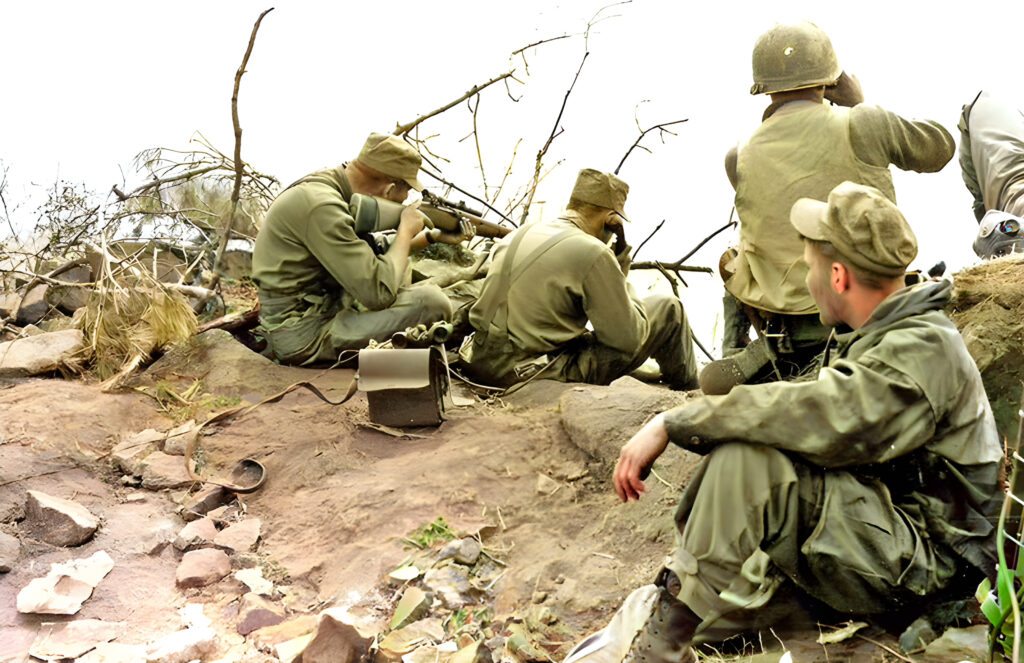
Political Fallout: Truman vs. MacArthur
The Yalu River Campaign further strained the relationship between President Truman and General MacArthur. Truman’s approach prioritized containment, avoiding escalation with China and the Soviet Union, while MacArthur’s aggressive strategy pushed for a broader war, including potential strikes on Chinese soil. This difference in perspective ultimately led to Truman relieving MacArthur of his command in April 1951, marking one of the most notable dismissals in U.S. military history.
This political fallout underscored the complexities of managing a multinational conflict with high stakes. The divergence in strategy highlighted the need for cohesive, politically aligned military strategies, especially when operating under a multinational coalition like the UN.
China’s Use of the People’s Volunteer Army (PVA)
China’s intervention in Korea was strategically framed as a “volunteer” mission, conducted by the People’s Volunteer Army (PVA) rather than the official Chinese military. This approach allowed China to engage in the conflict without formally declaring war, avoiding direct confrontation with the U.S. China’s PVA consisted of several field armies, utilizing a mix of captured Japanese and Soviet equipment to augment their forces.
The PVA relied on its soldiers’ resilience, mass attack tactics, and innovative night warfare strategies to counter the technological superiority of UN forces. Their operations, coordinated by seasoned commanders, illustrated China’s commitment to supporting North Korea and showcased its ability to project power beyond its borders.
The Impact on the Korean Peninsula and Cold War Dynamics
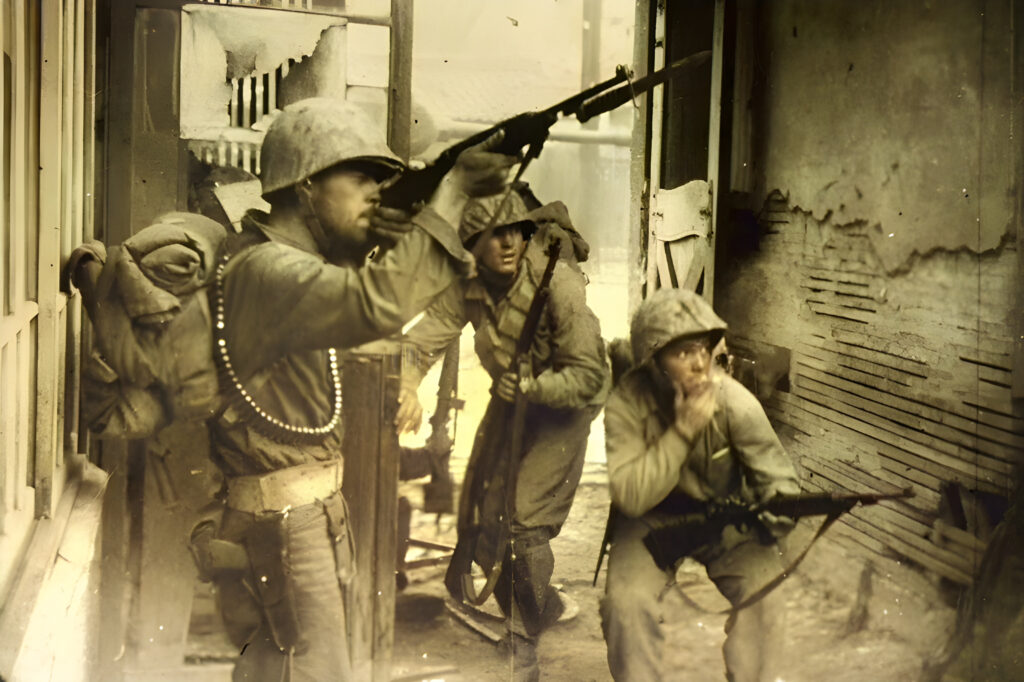
The Yalu River Campaign had a lasting impact on Cold War dynamics, reinforcing the division of Korea and escalating tensions between the East and the West. China’s intervention demonstrated its willingness to defend regional allies, reshaping global perceptions of its role in the Cold War. For the U.S., the campaign underscored the importance of containment and contributed to the broader Cold War strategy of limiting Soviet and Chinese influence.
This intervention marked China’s emergence as a significant military power, influencing U.S.-China relations and solidifying Korea’s division—a division that remains one of the most enduring legacies of the Cold War.
The Final Stalemate: Setting the Stage for Armistice
Following months of intense combat and heavy losses on both sides, the Korean War settled into a stalemate by mid-1951. Both sides established fortified positions, creating a de facto boundary along the 38th Parallel. This deadlock led to armistice negotiations that culminated in the 1953 ceasefire, which remains in place to this day.
The Yalu River Campaign was instrumental in setting the stage for this armistice. By forcing a stalemate, it preserved North Korea’s existence as a separate state, creating a lasting geopolitical divide on the Korean Peninsula that continues to shape East Asian politics.
Conclusion
The Yalu River Campaign remains one of the defining moments of the Korean War, demonstrating how strategic miscalculations and unexpected interventions can transform the course of a conflict. China’s entry into the war reshaped the conflict, leading to a prolonged stalemate that ultimately prevented the unification of Korea. The campaign serves as a stark reminder of the complexities of war and the importance of understanding both geopolitical contexts and on-the-ground realities.
